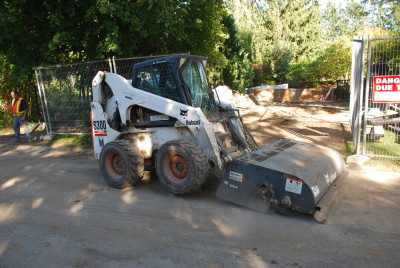Proactive vs. reactive project management
Proactive management is preferred, as it allows builders to be better organized and co-ordinated, while reactive management involves reacting to events and constantly dealing with problems.
All project management methods, however, revolve around time, quality, cost and scope. The interrelationship between these variables can not be avoided. Better quality will generally cost more and take longer. If the client wants the project completed faster, builders will have to sacrifice quality, scope or cost.
Cost control
Time and cost estimates have to be both realistic and adjusted throughout the duration of the project. Client feedback is imperative, along with constant updates to all subtrades and suppliers. New requirements and additions to the scope of the project will necessitate the commitment of more resources, time, material and costs.
Quality workmanship
The project manager’s job is to lead, organize, plan, control, implement, evaluate and maintain the objective. The initial team meeting should review the entire plan to establish the overall goal.
At this stage, the roles of all players need to be firmly agreed upon. The role of the project manager is to encourage, be positive and look at the big picture, while also paying attention to the details. A reputation of ‘doing what you say, when you say’ goes a long way. Simple courtesies, such as returning phone calls and e-mails promptly, allow the project to progress smoothly. When trades can rely on the builder’s scheduling abilities, they will show up with the knowledge that everything is ready for them to complete their portion of the project.
Project consummation

Upon project completion, everything must be reviewed to verify all project goals and contract obligations were met. The way a builder finishes a project and finalizes the details is the last impression they leave on clients and their neighbours. A deficiency list or punch ticket needs to be produced. Site clean up, including final inspections, system startup and careful review of all project elements, is key.
Bonds must be released, warranties reviewed and final site photographs produced. Sign offs from inspectors, neighbours, clients, subtrades and crew leaders ensure all parties involved are satisfied with the end result.
A well-run, organized, professional project is a difficult undertaking. Any fees earned for project management are deserved and well worth the additional cost to the client. The end result of a successfully managed project is extremely satisfied customers. This directly impacts referral rates, sales and profits, which are all great reasons for more builders to start planning, implementing, reviewing and managing more of their aquatic environment projects.
 Barry Justus is the owner of Poolscape Inc., a landscape contractor and pool designing and building company based in Burlington, Ont. He can be reached at barry@poolscape.com or by visiting www.poolscape.com.
Barry Justus is the owner of Poolscape Inc., a landscape contractor and pool designing and building company based in Burlington, Ont. He can be reached at barry@poolscape.com or by visiting www.poolscape.com.






